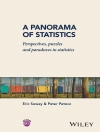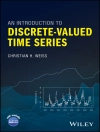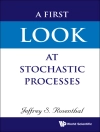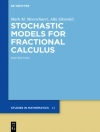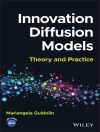This book covers the method of metric distances and its application in probability theory and other fields. The method is fundamental in the study of limit theorems and generally in assessing the quality of approximations to a given probabilistic model. The method of metric distances is developed to study stability problems and reduces to the selection of an ideal or the most appropriate metric for the problem under consideration and a comparison of probability metrics.
After describing the basic structure of probability metrics and providing an analysis of the topologies in the space of probability measures generated by different types of probability metrics, the authors study stability problems by providing a characterization of the ideal metrics for a given problem and investigating the main relationships between different types of probability metrics. The presentation is provided in a general form, although specific cases are considered as they arise in the process of finding supplementary bounds or in applications to important special cases.
Svetlozar T. Rachev is the Frey Family Foundation Chair of Quantitative Finance, Department of Applied Mathematics and Statistics, SUNY-Stony Brook and Chief Scientist of Finanlytica, USA. Lev B. Klebanov is a Professor in the Department of Probability and Mathematical Statistics, Charles University, Prague, Czech Republic. Stoyan V. Stoyanov is a Professor at EDHEC Business School and Head of Research, EDHEC-Risk Institute—Asia (Singapore). Frank J. Fabozzi is a Professor at EDHEC Business School. (USA)
Tabla de materias
Main directions in the theory of probability metrics.- Probability distances and probability metrics: Definitions.- Primary, simple and compound probability distances, and minimal and maximal distances and norms.- A structural classification of probability distances.-Monge-Kantorovich mass transference problem, minimal distances and minimal norms.- Quantitative relationships between minimal distances and minimal norms.- K-Minimal metrics.- Relations between minimal and maximal distances.- Moment problems related to the theory of probability metrics: Relations between compound and primary distances.- Moment distances.- Uniformity in weak and vague convergence.- Glivenko-Cantelli theorem and Bernstein-Kantorovich invariance principle.- Stability of queueing systems.-Optimal quality usage.- Ideal metrics with respect to summation scheme for i.i.d. random variables.- Ideal metrics and rate of convergence in the CLT for random motions.- Applications of ideal metrics for sums of i.i.d. random variables to the problems of stability and approximation in risk theory.- How close are the individual and collective models in risk theory?- Ideal metric with respect to maxima scheme of i.i.d. random elements.- Ideal metrics and stability of characterizations of probability distributions.- Positive and negative de nite kernels and their properties.- Negative definite kernels and metrics: Recovering measures from potential.- Statistical estimates obtained by the minimal distances method.-Some statistical tests based on N-distances.- Distances defined by zonoids.- N-distance tests of uniformity on the hypersphere.-
Sobre el autor
Svetlozar T. Rachev is a Professorin Department of Applied Mathematics and Statistics, SUNY-Stony Brook. Lev B. Klebanov is a Professor in the Department of Probability and Mathematical Statistics, MFF, Charles University, Prague, Czech Republic. Stoyan V. Stoyanov is a Professor of Finance, EDHEC Business School, Head of Research, EDHEC-Risk Institute. Frank J. Fabozzi is a Professor of Finance, EDHEC Business School







